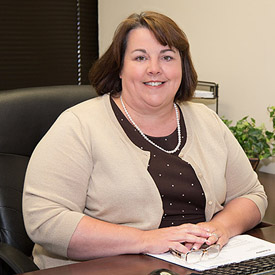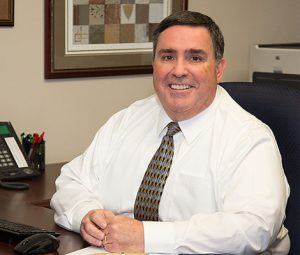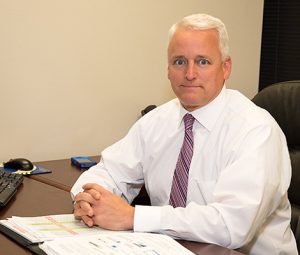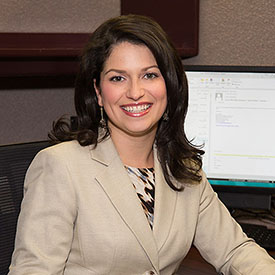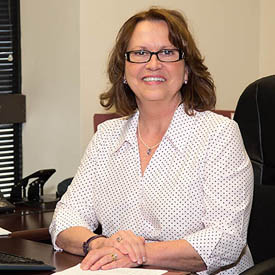In This Article:
- Retirement Plan Rx
- Introduction
- Types of Retirement Plans
- Getting Employees to Join the Plan
- Utilizing Your Resources
- In Conclusion
- Rise of the Machines
- Participant Loans: Benefit or Detriment?
Introduction
The latest news regarding retirement plans has centered around service provider fees. While fees are a highly important aspect of managing an employer-sponsored retirement plan, they are not the only metric of your overall retirement plan’s health. A low-cost retirement plan does not necessarily parallel a fruitful pension program for employees. Studies show that since Social Security was never designed to fully fund an individual’s retirement,employer-sponsored retirement plans have become an integral part of employees’overall financial plan for their future. Relying so heavily on this one component should prompt any plan sponsor to ask one very straight-forward question… How healthy is my company’s retirement program?
Types of Retirement Plans
The U.S. retirement system historically has relied on defined benefit planscommonly called “pensions”, as the most common way that companies helpedemployees prepare for retirement. In pension plans, the responsibilitiesfor funding the plan and investing the plan’s assets lay with the employer. Since the late 1980’s, employers have migrated to defined contribution plans,with 401(k) plans being the most popular. In contrast to pension plans, 401(k)plan funding is a shared responsibility between the employer and the employee;for most plans, investment decisions are made by the participant. Thoughthis arrangement has been a continuous trend for more than 30 years, expertsargue that if employers had a systematic way to calculate the actual cost ofemployee turnover, they might pay more attention to alternative ways of “paying”employees. If pension plan benefits were factored into compensationpackages, an employee might take home a little less pay to have benefitsguaranteed in retirement. Consideration of exploring a defined benefit orcash balance plan may be a way to increase overall retirement plan health.
Though many small employers favor the 401(k) plan approach, not all plans arecreated equal. All 401(k) plans allow for employer contributions, but,unless the employer elects a Safe Harbor option, these contributions arediscretionary in both the amount and allocation method. Therefore, thebenefits of any 401(k) plan can vary drastically depending on the annual fundingdecisions of the plan sponsor. By educating employees on plan options, thebenefits of saving more, keeping deferral rates up, and utilizing all financialresources, it is possible to optimize any company budget to ensure everyone onthe team is saving more for retirement.
A 2014 study of 9 million U.S. employees’ data revealed that less than 50% of workers ages 20 to 29 are currently saving for retirement. Of that group,the average contribution rate was less than 5%! The numbers increase witholder participants but, even in the 50 to 60 age group, only 65% of employees were participating in their company’s plan, with an average contribution rate of 7.7%. Numbers approaching 70% are healthy figures and above that, even better still. If a plan’s participation is in the 40-60% range, there are likely a few ways to boost participation numbers, as well as participation contribution rate.
| Age Group | % Employees Who Saved |
Savings Rate |
| 20-29 | 48.8% | 4.9% |
| 30-39 | 57.9% | 5.7% |
| 40-49 | 62.4% | 6.3% |
| 50-60 | 65.6% | 7.7% |
| 61-69 | 64.4% | 9.2% |
| TOTAL | 60.2% | 6.7% |
| “The Retirement Savings Paradigm: Factors Influencing Saving” by the ADP Research Institute. | ||
Getting Employees to Join the Plan
Education
As employers started to replace pension plans with defined contributionplans, retirement education became, and remains, incredibly important. Lack ofemployee education is the most common reason cited for not participating, orparticipating further, in a company’s retirement plan, especially amongst lowerincome workers. There are many reasons employees don’t follow through onenrollment in a retirement plan but it largely seems due to complicatedprocesses. There are myriad decisions to make and confusing paperwork tocomplete. Industry jargon, along with a large menu of investment options, can beintimidating or confusing. The best way to encourage participation is tokeep the plan straight forward, accessible, and provide access to greateducational tools. Try to avoid overwhelming people with excessivepaperwork or educational schedules that don’t match their work environment. There is a wealth of materials available for employees, such as articles,videos, and online tools like webinars, that can be posted to a web portal ormade accessible through Human Resources.
While providing educational materials via the use of technology isbeneficial, especially for the younger generation, there is still no replacementfor personal interaction with the people who handle your retirement account.Group seminars to discuss plan features like fees, cover performanceinformation, and discuss how integration of your retirement assets should workin conjunction with Social Security benefits are excellent ways to breakdownparticipation barriers. Most financial advisors are more than willing tohelp in this endeavor. The most successful tool of all may be one-on-onemeetings between the plan’s investment professional and the participant.
Automatic Enrollment
It may be easy to provide education to those employees that are in the officeand are working standard daytime hours; but, when workers are remote, in-field,or second and third shift, the availability of thorough education is strained.
To combat low participation rates, some employers are adopting automaticenrollment of employees into a 401(k) plan. Automatic enrollment allows anemployer to enroll an employee into the company’s plan at a determinedcontribution percentage unless the employee makes an election not to contribute,or an election to contribute a different amount. Employees who are intimidatedby the decisions of enrolling in the plan and fail to complete the appropriateenrollment paperwork will default into participating as opposed to defaultingout. It is important to understand that this does not make participationmandatory because employees can make an affirmative election to opt out at anytime. Especially valuable for those with workers in the field, remoteworkers, and later-shift employees, automatic enrollment has proven to be anexcellent participation enhancement tool.
Roth Option
The Roth 401(k) combines some of the most advantageous aspects of both 401(k)plans and the Roth IRA. Under the Roth 401(k), employees may contribute funds ona post-tax elective deferral basis, in addition to, or in place of, pre-taxelective deferrals under their traditional 401(k) plans. This option isespecially attractive to younger workers which are residing in a lower taxbracket now, but probably won’t be in that same bracket at retirement age. While the Roth 401(k) option will require additional administrative recordkeeping, it provides another way for participants to become involved in theirfinancial future.
Mobile Options
As highlighted in our April issue, “Benefit Communications in an ElectronicWorld”, keeping up with technology can go a long way in attracting youngerworkers to participate. As smartphones and tablets have become engrainedin both work and personal life, it makes sense to include your retirement andinvestment information on a platform which is readily available and more likelyto be accessed. For those with a higher percentage of millennials in theemployment ranks, this is becoming more of a necessity than just an innovativeidea. Providing low-cost apps allows workers to take care of benefits onthe devices that they are already familiar with and constantly using.
Increase Deferral Rates
Once employee participation rates are higher, it is time to encourage teammembers to save more. Debunking some of the misconceptions that participantshave regarding their plan through good educational tools will go a long way, butthere are a few other avenues to consider as well.
Increasing Automatically Enrolled Contributions
Automatic enrollment, as mentioned before, is a highly-effective way toincrease participation rates. While plans offering automaticenrollment garner more participation, the typical 3% default contribution isusually not touched after the initial enrollment. Increasing the rate ofthe default contribution will bolster a participant’s account balance and theplan’s assets, furthering their chances of a healthy retirement. A slightincrease to the contribution level of just 1% or 2%, goes a long way towardsimproving their retirement outlook.
Stretching a Match
One of the most prevalent misconceptions that participants have about their401k plan is that the maximum they can contribute is equal to the cap that isplaced upon the matching contribution made by the employer. For example,if an employer contributes a match of 25% up to 4%, participants tend to elect4%. To persuade participants to increase contributions, some plan sponsorshave adopted a stretched match as a form of motivation. There are a variety ofmatching formulas that incentivize increased deferrals and are often costneutral to the employer. An example might be as follows:
- 100% on the dollar up to 3% of pay most likely results in a 3% contribution from the participant for a total contribution of 6% of pay.
- 50% on the dollar up to 6% of pay (still a 3% outlay for the employer) encourages a 6% contribution from the employee and a combined contribution total of 9%.
If offered, participants often try and maximize the benefit and push deferralrates to take full advantage of the cap on matching contributions. If theemployer sponsors a Safe Harbor plan, there are still options available to”stretch” the match.
Automatic Escalation
Many companies are now implementing auto-escalation in their 401(k) plans.With auto-escalation, the contribution level is automatically increased atregular intervals, typically 1% a year, until it reaches a preset maximum. Plansponsors are free to choose the maximum automatic escalation contributionpercentage that works the best for their plan. The goals of the plan shouldalways be considered in conjunction with a percentage increase that will notcompromise an employee’s income needs. Given that many employees rarelychange their level of contribution once enrolled in the plan, auto-escalation isan excellent way to help employees save more for retirement.
Utilizing Your Resources
How often is the company in contact with the advisors for the plan? How oftendo employees have a chance to attend meetings and ask questions? Do theyhave access to that resource outside of scheduled group meetings?
Interaction with knowledgeable plan advisors is a facet of retirementeducation that is underutilized. Ideally, participants should attendan educational meeting at least once per year. If the employer orparticipant’s plan goals have changed, the respective pension professionals arethere to help the company adapt. Additionally, the investment selectionscurrently offered in the plan may become less desirable over time andnecessitate a recommendation for replacement and presentation to theparticipants of the plan. Showing the employees that the plansponsor is actively engaged in keeping the plan up to date through the knowledgeof their advisors is an effective way to sustain ongoing interest in the plan.
Future Possibilities…?
The future may hold further developments directed squarely at retirementhealth. Auto portability has presented itself as a possible solution to themassive premature withdrawal of retirement funds. Auto portability is theroutine, standardized, and automated movement of an inactive participant’sretirement account from a former employer’s retirement plan to their activeaccount in a new employer’s plan. It serves the needs of participants that aresubject to the mandatory distribution provision of their plan (account balancesless than $5,000) to curb the levels of cash-out leakage occurring asparticipants change jobs. Auto portability could be adapted to larger accountbalances should a higher mandatory distribution limit be dictated by policy.Both fast and slow cash leakage could be greatly reduced through these practicesand help reduce the overwhelming cash-out epidemic that currently adverselyaffects your retirement plan health and the health of its participants. Why thehold up? Retirement Clearinghouse, the company leading the charge, is seekingthe Department of Labor’s okay to use negative consent for auto-portability,clearing up the chance of any unintended consequences for plan sponsors andrecordkeepers. Auto portability just may be a pension innovation worth keepingan eye on.
In Conclusion
A healthy retirement plan is a valuable benefit for the future lives of allinvolved, especially as younger generations may face a changing Social Securityprogram. With a little bit of attention and education, employers andemployees alike should be getting the most out of their participation in theplan. In order to optimize a sponsored plan, it’s crucial to educate everyoneinvolved, keep deferral rates up, and utilize all the financial advice resourcesavailable.
Rise of the Machines
Over the last 30 years, there’s been an incredible array of advancements intechnology that have impacted various parts of our lives. While not all ofthem were amazing, many of them inherently improved our quality of life and someallowed us to catapult forward into a world of instantly accessible informationon a scale never witnessed. As computer science has seeped into almostevery facet of life, there’s been an increase in connectivity, productivity, andefficiency.
The world of investments is no exception. Enter the latestCyberdyne-esque creation to go mainstream… the Robo-Advisor. While it isnot likely that any big budget action movies will be released out of Hollywoodon its behalf, its impact on the way people invest their money may prove to beexplosive nonetheless.
Robo-advisors are a class of auto-adviser that provide financial advice orportfolio management online with minimal human intervention. These systemsprovide digital financial advice based on mathematical rules or algorithms. Thealgorithms are executed by software automatically allocating, managing, andoptimizing clients’ assets and thus provides financial advice that does notrequire a human advisor. The rise of the machines emerged in 2008, mostprominently in the States, and today there are over 100 of these servicesoffered to plan sponsors and investment advisors.
Is this something to be truly considered? Could it help participantswith their investment decisions? While we know that nothing can replacethe knowledge and comfort that participants can get from meeting with afinancial advisor, some advisors are considering adding robo-services as acompanion option to their financial advice with an aim to further engageparticipants in the plan and perhaps as a tool for those hard-to-reach workers(remote or field workers, and those that work late night shifts).
While robo-advisors may not be the solution to a universal education onretirement plans, they add an intriguing new option for advisors and sponsors toexplore and thereby enhance the engagement of their participants. While theautomation of such a cumbersome task is exciting, navigating the investmentselections in a retirement plan is not perfected by algorithms. Some ofthe most important financial decisions require real-life advice from a real-lifeperson, the financial advisor.
Participant Loans: Benefit or Detriment?
For many years, plan sponsors have wrestled with the decision to offer loansto their plan participants. Some consider them to be a benefit and evenpromote them as a legal way to use tax free money while participating in theplan. According to the Employee Benefit Research Institute, 87% of planparticipants can take a loan against their retirement account. Of thoseemployees with access to take a loan, about one-fifth borrow against theretirement account. Come retirement, what are the effects of loans takenfrom pension funds on an employee’s account?
A few years ago, the term “Account Leakage” started to be used when reportingon the effects of participant loans. Account leakage refers to lost assetaccumulation due to reduced earnings, elections to reduce contribution levels,and the cashing out of account balances when participants terminate.
- Lost Accumulation Due to Reduced Earnings:
When a participant takes a loan, the interest rate, which is detailed in theplan’s loan agreement, must be “reasonable” and is commonly tied to the primerate plus 1% or 2%. Recently, the prime rate climbed to 4%. Mostparticipant loans in existence have rates based upon 3.5%, the prime rate ineffect for the last several years. With the value of the loan earning a rate of4.5% to 5.5%, participants with loans could well underperform the returns of theinvestment options offered within their plan. Since the duration of mostloans is 5 years, there can be significant loss of earnings that will ultimatelyerode their account balance at retirement. - Elections to Reduce Contribution Levels:
Under the terms of a participant loan, the participant must agree to makeloan payments no less frequently than on a quarterly basis. To simplifycollection procedures, most employers require that loans be paid through payrolldeduction which consequently reduces take-home pay. Many participantselect to reduce, or even eliminate, their contributions to the plan to alleviatethe impact of the loan payment on their paycheck. Given that the mostcommon term for a participant loan is five years, employees are losing thosecontributions, and the earnings on those contributions, towards theirretirement. - Cash-out of Account Balances:
When a participant terminates employment, they must decide what to do withtheir account balance from their former employer. Studies show that nearly40% of terminated employees ask for a cash distribution and, according toMorningstar, in 2013 that added up to about $68 billion that leaked fromretirement savings. When a participant loan is part of the account balance,participants are faced with an even more demanding situation. Since themajority of plans require payment of the outstanding loan balance attermination, the former employee must have the cash to repay the loan in full. As a result, over 70% of plan loans default and become a taxable distribution.
Account leakage is a significant issue in retirement planning with someexperts even calling it a crisis. What is a plan sponsor to do? Somecompanies are offering low-cost loan alternatives to discourage employees fromborrowing against the plan; leaving account balances intact. Othersponsors offer services with a financial advisor who can encourage otherfinancial options or compare the loan program with other low-cost lending. Limiting loan availability to one at a time, encouraging early payoffs, andinstituting a waiting period between the initial loan payoff and the start ofthe next, has helped to minimize the prevalence of a negative loan impact on theplan. Reducing the number of loans has helped many sponsors to keepparticipant account balances intact and to reduce the administrative burden ofmaintaining them.
This newsletter is intended to provide generalinformation on matters of interest in the area of qualified retirement plans andis distributed with the understanding that the publisher and distributor are notrendering legal, tax or other professional advice. Readers should not act orrely on any information in this newsletter without first seeking the advice ofan independent tax advisor such as an attorney or CPA.
©2017 Benefit Insights, LLC All rights reserved.




